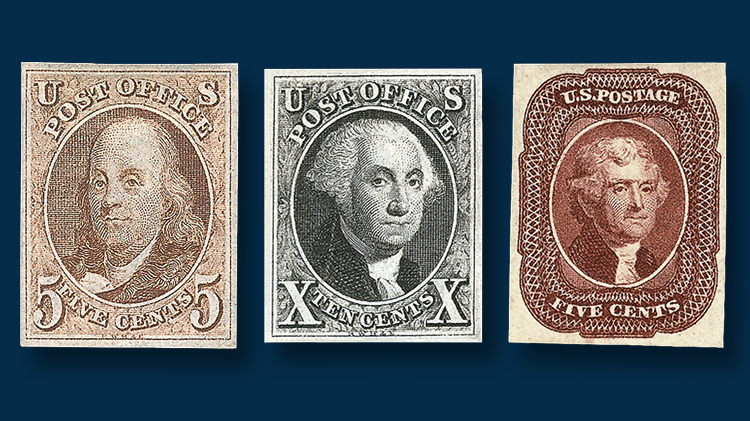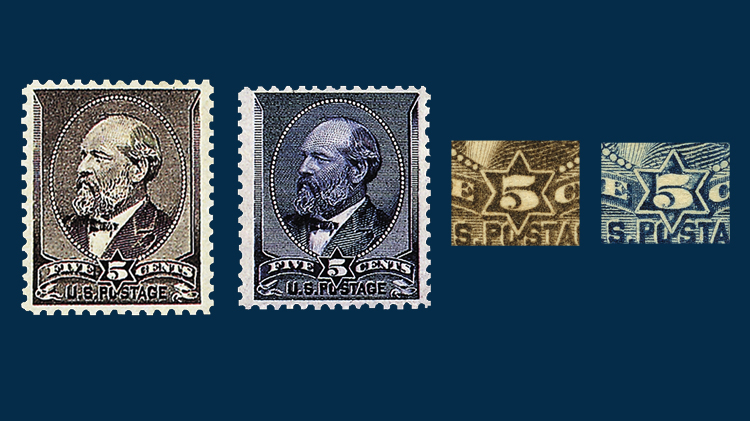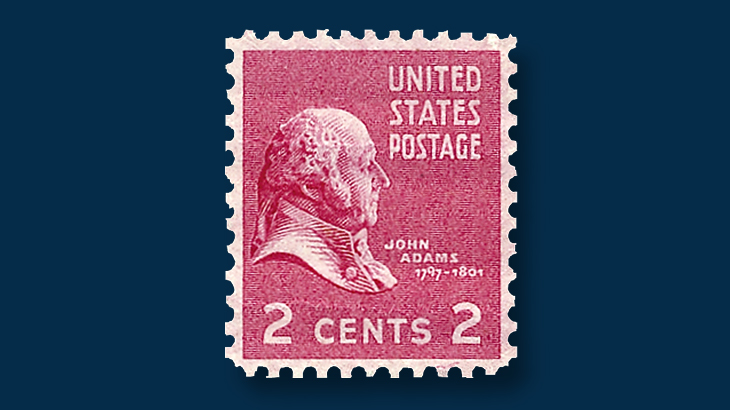US Stamps
Questions about stamps showing two presidents: Adams and Garfield
U.S. Stamp Notes — By John M. Hotchner
Two good questions from Linn’s reader Bill Peters recently got my attention.
His first question was about John Adams.
He wrote: “John Adams was our second President and yet graced no stamp until 1938. Any thought why it took so long given that many lesser people were on stamps much earlier? Had he made enemies, was disliked, or just overlooked?”
Issued June 3, 1938, the John Adams stamp (Scott 806) is part of the Presidential series, nicknamed the Prexies.
Peters also asked about the design of two earlier stamps showing President James A. Garfield: “Scott No. 205 and No. 216 have President Garfield and a very prominent Star of David with a ‘5.’ Do you know the background of why this Jewish symbol was used?”
Both questions deserved answers, so I spent a couple of hours digging though my philatelic library and clipping files with not very much success.
Adams was certainly one of the more consequential figures in the period leading to independence but was not thought of as one of the great presidents. By 1847, when the first United States postage stamps were issued, there were three outstanding men from the Revolutionary War period who were contenders for the philatelic honor: Ben Franklin, George Washington and Thomas Jefferson.
Franklin and Washing made the first issue; a stamp for Jefferson was added in 1851. All three men were featured again on stamps in the 1857 and 1861 issues.
The subjects on U.S. stamps were not broadened until 1863 when Andrew Jackson was added. Abraham Lincoln would be added in 1866.
Adams is not the only forgotten president from the early years. Of the first 10 presidents, John Quincy Adams, Martin Van Buren, William Henry Harrison and John Tyler also were first pictured on U.S. stamps in the 1938 Presidential series.
It seems that with a very limited number of stamps being issued, postal authorities wanted to stick with the icons for the first 20 years, and after that, they opted to honor only people still in the public consciousness and the greatest of the great.
Regarding the 1882 5¢ yellow brown and 1888 5¢ indigo Garfield stamps, my takeaway is that the design using the six-pointed star seems to have no special significance. At least there is nothing mentioned by Lester Brookman in his discussion of the stamps in The United States Postage Stamps of the 19th Century.
Make of it what you will, it seems to be simply a geometric design that worked for the overall presentation, stars being one of the patriotic images associated with the United States.
Connect with Linn’s Stamp News:
Sign up for our newsletter
Like us on Facebook
Follow us on Twitter
Any reader comments are welcome, as are additional questions sent to me via email.
MORE RELATED ARTICLES
Headlines
-
US Stamps
Oct 9, 2024, 2 PMGratitude for Denise McCarty’s 43-year career with Linn’s
-
US Stamps
Oct 9, 2024, 12 PMWorld’s first butterfly topical stamp in strong demand
-
World Stamps
Oct 8, 2024, 3 PMRoyal Mail’s Oct. 1 definitive meets new international standard rate
-
World Stamps
Oct 8, 2024, 12 PMPostcrossing meetup Oct. 9 at U.N. headquarters











